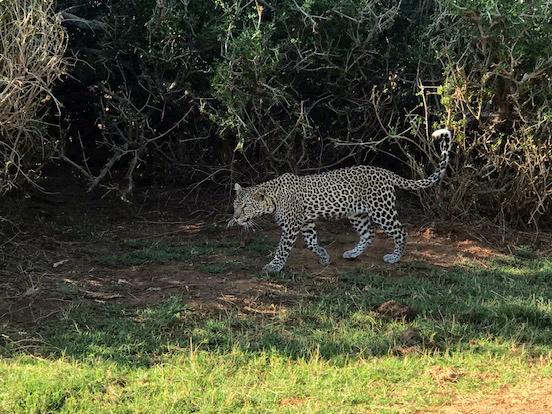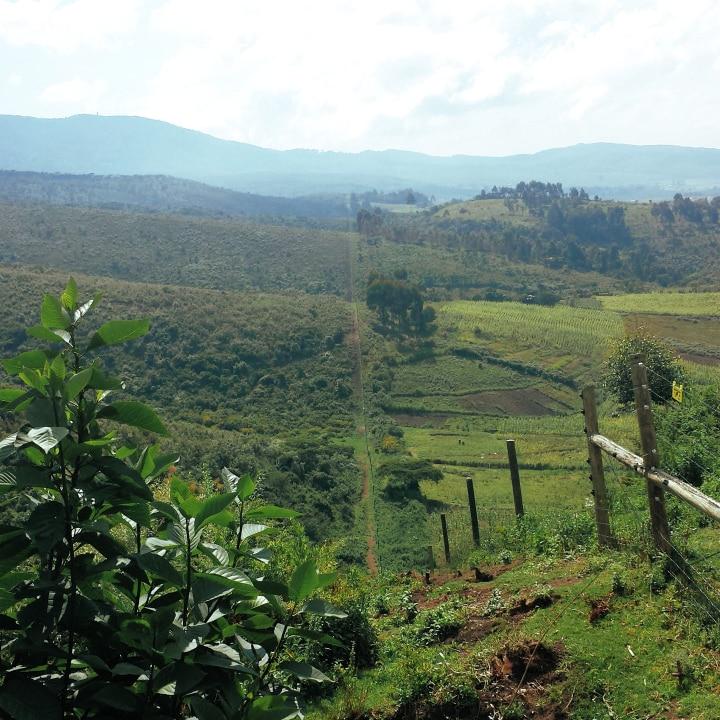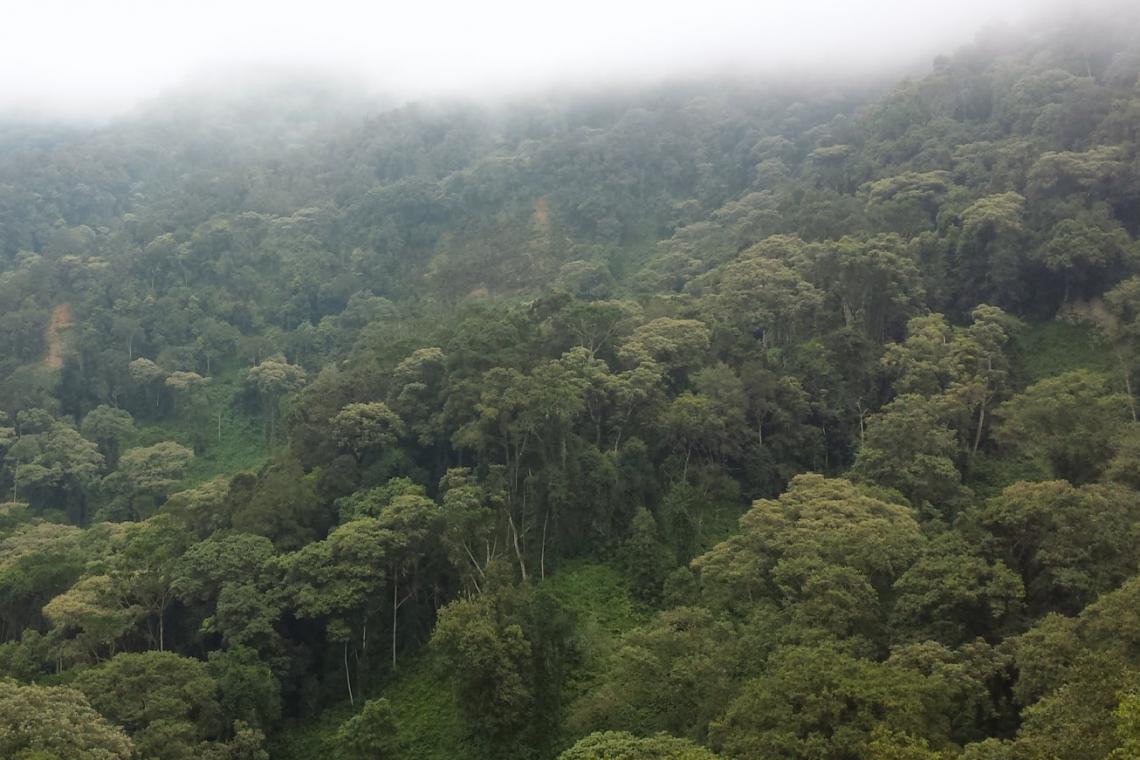There are few places where you can jump in a car, leave behind a city of millions and after only two hours’ drive find yourself in a pristine indigenous forest with substantial tracts of magnificent old trees and a rich forest floor carpeted with ferns, vines, grasses and abundant wild flowers.
Eburu Forest was gazetted in 1936 and falls under the Mau Forests Complex which is fully managed by the Kenya Forestry Services (KFS). Compared to other forests, Eburu is a small forest of 8,700 hectares on the rolling foothills, deep valleys and steep slopes of little known Mount Eburu. This prime indigenous forest nestles within the folds of a geologically active volcanic mountain. The mountain overlooks Lake Naivasha, Lake Elmentaita and Lake Nakuru and is the source of the Ndabibi River, numerous streams and ground springs.

The community spells their name differently to the forest reserve, as in Eburru rather than Eburu. If you look on the map you will notice that the Forest is Eburu whereas the community is known as Eburru, somewhat confusing but important regarding the correct spelling for the forest.
Most motorists zoom past on the Nakuru highway not realising that travelling along North Lake Road towards the Rift Valley Lodge, on the northern side of Lake Naivasha, it is easy to get to the Eburu Forest. Those of us who have visited have been delighted to find this tranquil forest and have spent a relaxed day either exploring, bird watching, hiking or picnicking in the glade.
Leaving the tarmac close to the Rift Valley Lodge you head continually uphill for 12km on a reasonable dirt road, following the KenGen Eburu Geothermal Power Station signs, passing through farmlands growing a wide range of food crops. The countryside is dotted with dwellings, village shops and rural schools. It comes as a surprise to see the steam billowing from the geothermal plant just inside the Eburu Gate, making you realise just how active this mountain really is.
Arriving at the barrier of the Forest station you are greeted with smiles and a warm welcome by the Forest rangers. The KFS operates a cashless system so all fees are payable by M-Pesa. Payment details are posted at all entry points. It is here that you can hire very knowledgeable guides who grew up in the forest and surrounding areas. The KFS receives all the gate money, which enables them to clear paths, maintain the tracks and carry out patrols to counter any poaching or wood collection.
Entering the calm, green forest the track narrows considerably and you drive down fern-lined tracks and through tree tunnels into the heart of the reserve. Stepping into the forest is like entering another world. You leave all the fuss and stresses of a busy life behind, to be greeted with the tranquillity and fragrance of nature. Branches covered in lichen hangover ferns and vines tangle themselves around the majestic trees towering above. The earthy smell of damp ground combined with fallen leaves has an instant calming effect.

Leopard Spotted in the Uburu Forest
Continuing along the track leads you into the thick upland forest and down scenic valleys until you reach the forest glade. Pack a picnic, bring binoculars, a book or simply doze off for an afternoon nap in the dappled light of the forest canopy. While a day trip is wonderful, a weekend is better as you can camp overnight. There are no facilities so everything needs to be brought in, including water.
For those who don’t want to camp, there are plenty of accommodation options around Lake Naivasha.
The forest is a paradise for bird watchers as it has a rich variety of upland birds. The delightful walking trails plus the opportunity of having knowledgeable birding guides makes this forest an appealing birding destination. It is also the home to an extraordinary diversity of butterflies, moths and insects as well as over 40 species of mammals.

Forest rejuvenation along the fence line
Eburu Forest is a treasure of the Great Rift Valley and that is why the Rhino Ark Charitable Trust stepped in and is engaged in a major long-term conservation exercise to preserve and sustainably manage the forest. Forests are the water towers of Kenya and since the 43.3 km electric fence was completed in 2014 there have been significant improvements in natural forest regeneration in Eburu. The partners of KFS: Rhino Ark Charitable Trust, Kenya Wildlife Services, the M-Pesa Foundation and Flamingo Horticulture have been instrumental in fundraising and promoting conservation of the Eburu Forest.

Giant Forest Hog
What you will now see is a commitment, not just from the conservationists and donors but also from the local Eburu communities who are proud of its revival and growing reputation. Communities who were once seen as opposing conservation are now important partners and see themselves to also be custodians of the forest.
Patrols have removed hundreds of snares and traps. Remote camera “traps” and GPS devices have been placed and are being monitored by the Bongo Surveillance Project. They patrol the forest checking the 40 cameras and give feedback on their findings. Translocation into the forest of other Mountain Bongo may be the only way to preserve this species.
Eburu Rafiki, the forest community group, supports the rejuvenation of the forest reserve. During 2020, after the long rains, they will plant 8500 seedlings on the denuded slopes. This is in addition to the 11 000 that were planted in 2019. They don’t just plant seedlings but they husband the plants by weeding, watering, inspecting and replacing any damaged.

Forest glade
As Wangari Maathai (Nobel Peace Prize laureate from Kenya) said: “Until you dig a hole, you plant a tree, you water it and make it survive, you haven’t done a thing. You are just talking.”The attraction of this forest is to walk in it and savour the remarkable natural scenery. There are six trails, all of special interest, which takes in some of the most beautiful scenery within the forest. The trails vary in distance covered and steepness as well as difficulty.
An excellent visitor’s guidebook THE MAU EBURU FOREST can be purchased at the entrance as well as from the Rift Valley Lodge, Loldia House, Rhino Ark office and Eburu Rafiki. Its aim is to encourage visitors to visit and discover the secrets of this precious long forgotten forest. The two longest trails are the summit routes, which are about 6km in length taking between four to six hours to complete. This is at an unhurried pace allowing walkers to enjoy sightseeing breaks along the way. There are four other trails taking from two to four hours to complete as well as shorter walks to the crater and around the glade. Details of all six walking trails are given in the guidebook.

Lush Forest in Uburu
Forests represent life, growth, peace and nature. Eburu forest is waiting for you; it is a safe haven and a place to feel rejuvenated.
Click HERE to visit Eburu Rafiki’s website.
Shop for a cause
Shop on amazon.com | amazon.co.uk



